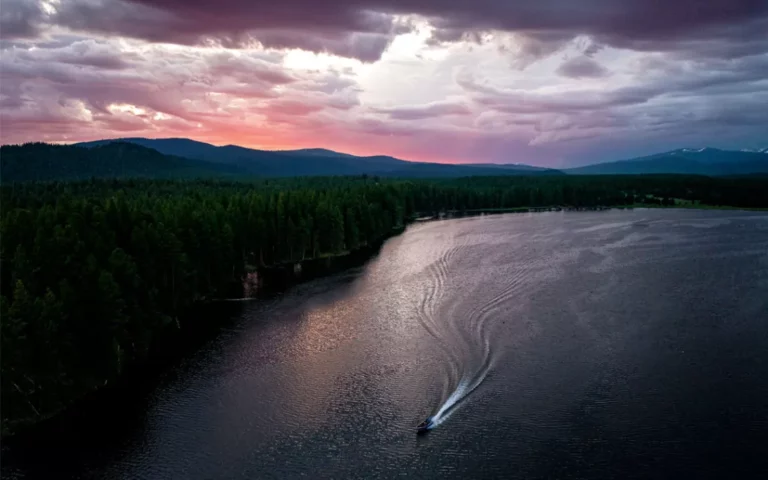Photo: The waters of Oregon’s Upper Klamath Basin provided a home for c’waam and koptu for millennia. In recent decades, pollution and low water levels from dams have pushed the fish toward extinction.
The fish have long been at the center of a sacred way of life
AMONG THE SPRAWLING wetlands and ponderosa-pine forests of the Upper Klamath Basin, fish once gave people life. In this part of Southern Oregon, winters can be long, harsh, and hungry. The Klamath Tribes tell a story that one particularly deadly winter, a spirit in the form of a giant serpent preyed upon villagers, picking people off one by one. When the villagers begged for relief from their creator, Gmok’amp’c, the god took the serpent to a mountaintop, chopped it into pieces, and threw the pieces into a lake—where they swam away as fish. The creator then announced that as long as the fish known as the c’waam and koptu remain, the Klamath people will continue to exist.
For generations, c’waam and koptu—also called Lost River suckers and shortnosed suckers—churned up the Sprague and Williamson Rivers at the end of every winter, when snow still lay on the ground and food stores grew scarce. Each year, the water writhed with fish. Weary of the winter, people native to this region, including those from the Klamath Tribe and the Modoc Nation, rushed to the rivers to fill basket after basket.
Klamath tribal member Garin Riddle Sr., also known as Big Badger, shared the origin story of the fish during a C’waam Ceremony this past April. Klamath elders and others from the community gathered around a crackling bonfire on the banks of the Sprague River to celebrate the c’waam and koptu’s return to their spawning waters—a ceremony dating back thousands of years. Patchy snow still covered the ground. The river, brown and turbid with snowmelt, was decisively empty of the fish.
“We almost didn’t have a C’waam Ceremony,” Riddle said.
Traditionally, the ceremony involves blessing two c’waam—one released back into the river, the other placed on the fire. This year, it had taken days and multiple pairs of eyes to track down and catch a single fish, which swam in a large black bucket at the center of the crowd of onlookers. The c’waam was a funny-looking creature—two feet long with a rounded and slightly upturned nose, like a bulldog’s. Its huge pink lips, which had evolved to scour lake and river bottoms for algae and phytoplankton, worked furiously. It was also beautiful, with navy blue scales and a tail fin that spread out like a folded-paper fan. “It was a struggle to catch this fish,” Riddle said.
There’s finally a reason to believe it’s not too late for the c’waam and koptu.
The suckers are teetering toward extinction. Each year, fewer than 30,000 c’waam and 6,500 koptu migrate back to their spawning grounds, down from the tens of millions that once thrived in the Upper Klamath Basin. Decades of habitat degradation and pollution from agriculture have rendered Upper Klamath Lake, the home to which they return after they finish spawning, poisonous. While most adult fish can withstand the pollution, it’s too toxic for […]
Full article: www.sierraclub.org

